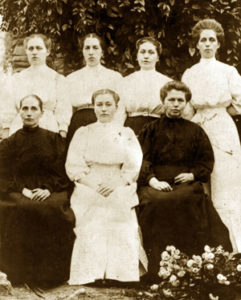Sevier County
In July 1964, Louise Walker died, and the homestead that her family had lived on for almost 100 years was taken over by the National Park Service, having been purchased years ago from the Walkers. After selling their land, the Walkers had lived in the Great Smoky Mountain National Park since its creation in the 1930’s, being allowed to stay on their land (now called the Walker Sisters Place) via a special lifetime lease. In many ways, the Walker Sisters Place serves as a bridge between the Sevier County that was and the Sevier County that is.
that her family had lived on for almost 100 years was taken over by the National Park Service, having been purchased years ago from the Walkers. After selling their land, the Walkers had lived in the Great Smoky Mountain National Park since its creation in the 1930’s, being allowed to stay on their land (now called the Walker Sisters Place) via a special lifetime lease. In many ways, the Walker Sisters Place serves as a bridge between the Sevier County that was and the Sevier County that is.
The Sevier County That Is
Sevier County’s notoriety can be attributed to the creation of the Great Smoky Mountains National Park in 1934. Millions of people visit Sevier County every year and know it primarily through the stretch of 441/321 highway that runs through Sevierville, Pigeon Forge, Gatlinburg, and all the way through the Park into NC.
However, though most people know Sevier County through these familiar sites, dozens of small, mostly unincorporated communities pepper Sevier county. Many of the people who work the attractions, shops, restaurants, and hotels of the GSMNP tourism apparatus live in one of these smaller communities, many of them belonging to families that have been in Sevier County since the first European settlers.

The Sevier County That Was
The land that is now Sevier County was, at the time of European settlement, Cherokee hunting grounds. It was the site of many skirmishes between white settlers and Chickamauga Cherokees up until the 1830’s, when the Cherokee were forcefully removed by the federal government.
Through this time and after, Sevier County’s society and economy was largely one of subsistence agriculture, though trade was present. Homesteads like the Walker Sisters’ were dotted all across the county, both in and outside of what would become the Park.
With the creation of the Park, subsistence farming and the way of life that went with it began to dwindle and the robust tourism economy that today fuels Sevier began to take shape.